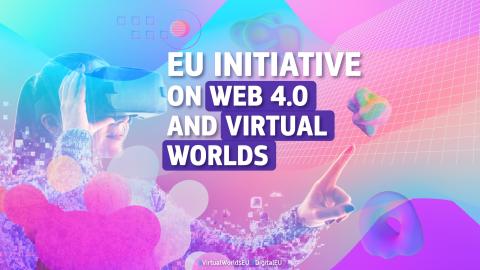I am proud to share some thoughts that Juneen Belknap Kirk, Chip Williams and Roberto Hernandez put together on this very important topic. Well established players face the risk of losing the relevance battle to social media platforms as the primary source of financial education. The metaverse can be a phenomenal tool to change this.
Financial services executives continue to look for ways to deepen relationships with existing consumers, attract new ones and increase their companies‘ relevance in an ever-more digital world. Using the metaverse to provide financial wellness services can be the answer. When done right, the metaverse can let you offer financial education and advice in ways that delight consumers, while helping to strengthen your brand for trust and innovation.
Make financial education immersive — and fun
Financial education can strike many consumers as a painful duty: something they ought to do, because it’s good for them, but not something that excites them. Often enough too, the lessons don’t really stick. The metaverse can help change that, by letting consumers experience likely events in their own lives and how financial decisions could impact them.
Are your clients considering where to buy a home? The metaverse can let them virtually explore different communities, to understand how appealing and affordable they might be. Are they saving for retirement? They can experience how possible retirements might be for them specifically at different ages, in different places, and with different amounts of assets. Are they shopping for insurance? They can virtually experience the impacts of property loss, disability or a death in the family — and how insurance might help. Do they like (as many consumers do) to learn about finance from their peers? You can create a metaverse community, where consumers can share experiences and strategies in an exciting, 3D environment — under your brand umbrella and with guidance (if desired) from your advisors.
Offer personalized coaching and advice — at scale
It can be expensive to offer truly personalized financial advice. It’s often so expensive that most financial institutions today only offer it for high net worth clients. But the metaverse can help make it affordable to offer this advice broadly, while also transforming the advising experience for consumers of every wealth level.
Want to meet with every client, without spending too much? Use the metaverse to offer virtual offices to host those meetings. In the metaverse, you can create these virtual offices, even if you don’t have any technical skills, at a very reasonable cost. That can let your advisors, anywhere in the world, meet clients wherever they may be. Are your human advisors already overworked? Then use generative AI to staff your virtual offices with “metahumans”: virtual simulations of humans that come across as lifelike, not just in their appearance, but in how they speak and interact with your clients.
You can also equip your financial advisors (whether human or metahuman) with a client’s personal financial history. The client and advisor can then together go through immersive simulations of possible life scenarios, supported by AI-generated forecasts. That can help you deepen relationships, provide more personalized advice and help your clients understand their choices.
But why would anyone do this? Rethinking gamification
There’s often been a problem with financial institutions’ attempts to make financial wellness services more appealing through gamification. Consumers just aren’t likely to come to your website (or metaverse space) looking to play games. You are not, after all, in the entertainment business.
But there is a place for gamification, as shown by an area where it’s often successful: upskilling. Employees who should pick up new skills are more likely to do it — and for the training to stick — if the process is fun and full of discrete challenges and rewards. Gamification can work best when it’s integrated into things that people are already doing. So, as you consider your metaverse space for financial wellness, you may want to keep this idea in mind: Very likely, no one is going to come just to play games. But if you create a space full of personalized education and advice with the ability for them to easily take action to help achieve goals that are important to them, then gamify parts of it too? You’ll likely have a powerful tool for engaging consumers.
3 guidelines to get started
The “hype” around the metaverse is relatively new, but its building blocks aren’t. At PwC, we’ve been developing and working with them for years. Now that these innovations have converged into the metaverse, we’ve invested in tested strategies by designing, executing and overseeing metaverse initiatives.
Based on this experience, we’ve found that three guidelines can help a metaverse project not only deliver attractive ROI, but also can enhance trust and help strengthen your brand.
- Start with outcomes. Don’t view your financial wellness offerings in the metaverse as an “experiment.” Instead, start by setting measurable business goals, such as for attracting new customers, deepening engagement with existing ones or growing revenue.
- Embed trust by design. It’s often critical for metaverse initiatives to enhance trust — not undermine it. Since the metaverse creates new kinds of risk, help reduce them early: design trust from the start into your approach to metaverse data, transactions and experiences.
- Stay true to your purpose and brand. Continuously assess your financial wellness metaverse initiatives for a consistent brand message. Remember too that customers may trust your metaverse presence more if it’s guided by a corporate purpose that matches their values.
When to start? Consumers and your peers say: right now
If you’re still in wait-and-see mode with the metaverse, you may want to reconsider. In the PwC 2022 US Metaverse Survey, 82% of executives said they expect metaverse plans to be part of their business activities within three years. Half or more of consumers said that they’re interested in the metaverse for activities such as attending courses / training (52%) and discovering and interacting with new brands (50%).
If you haven’t gotten started in the metaverse, or you’re only using it for internal processes like onboarding and upskilling, developing a financial wellness offering can be an opportunity to go further: start using the metaverse to help transform your relationship with existing clients and potentially gain new ones too.
Quelle:
https://www.linkedin.com/pulse/financial-wellness-metaverse-new-opportunity-help-engage-hernandez/




